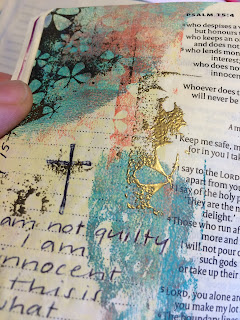I’m certain
many of you have seen the pictures I have posted from time to time of our
lovely friends from Creative Cafe Church.
We have met
together on the second Sunday of every month for the last six years and as our
name suggests we are a very creative group!
Each of our special friends comes along with their family a
friend or a carer as it is important to us that Cafe Church is a time of family
worship and fellowship, a time when we can just relax, be ourselves, as God
intended, without worrying about others!
As you can no doubt imagine our worship, prayer times and
teaching times can be noisy, exuberant, funny and sometimes amazingly quiet and
spirit filled. We share news, worries, hopes and achievements, and we spend
time in the Word together. We use a
variety of approaches, picture boards, puppets, musical instruments, drama and
powerpoint presentations.
A
very important part of worship time is our craft time, we have young (and
slightly older) people with profound and multiple disabilities, Down’s
Syndrome, Autism, general learning disabilities and cerebral palsy. Many of
them need a multi sensory approach to consolidate their understanding and
learning and the craft time offers a very visual reminder of the theme for the
day.
Very often we produce a piece of art to share with someone
else, particularly when we have been thinking of God’s love for us, being kind,
making good choices. At the beginning the craft was very much for our special
friends but over the years I have had to make sure that I prepare enough
materials for everyone to take part, friends, family members and carers!
The art we produce is, of necessity, fairly simple but as in
Bible journaling sometimes profound truth can be revealed in very simple
imagery. Cafe Church journaling is
always a time of fun and chatter. We use paints, collage, Bible verses,
photographs, model making and have made little books to share with friends.
Tori, our first member has saved every craft/art piece since the very
beginning; they go all around the walls of her bedroom and have overflowed into
the spare bedroom!
I just love
this picture! It sums up the whole ethos behind Creative Cafe Church so very
beautifully.
It is also
so relevant to us as Bible Journalers; how many of us still measure our efforts against those of others?
One thing
that I have learned from my Cafe Church friends, when they bring me their
finished pictures they are so proud, they know it’s just perfect, they don’t
compare their work to that of anyone else, they celebrate and praise each
other.
Art doesn’t have to be “perfect”, art doesn’t have to be a
“masterpiece”, colouring doesn’t have to stay in the lines. When a child or a
loved one offers you the gift of their efforts you love it, you are blessed by
it, you are touched by it, you accept it joyfully and delightedly. Does this
make you think of someone else?
Our Bible Journaling endeavours are an act of worship and a
love offering to our God, I can’t wait to see the fridge door in Heaven!
















































